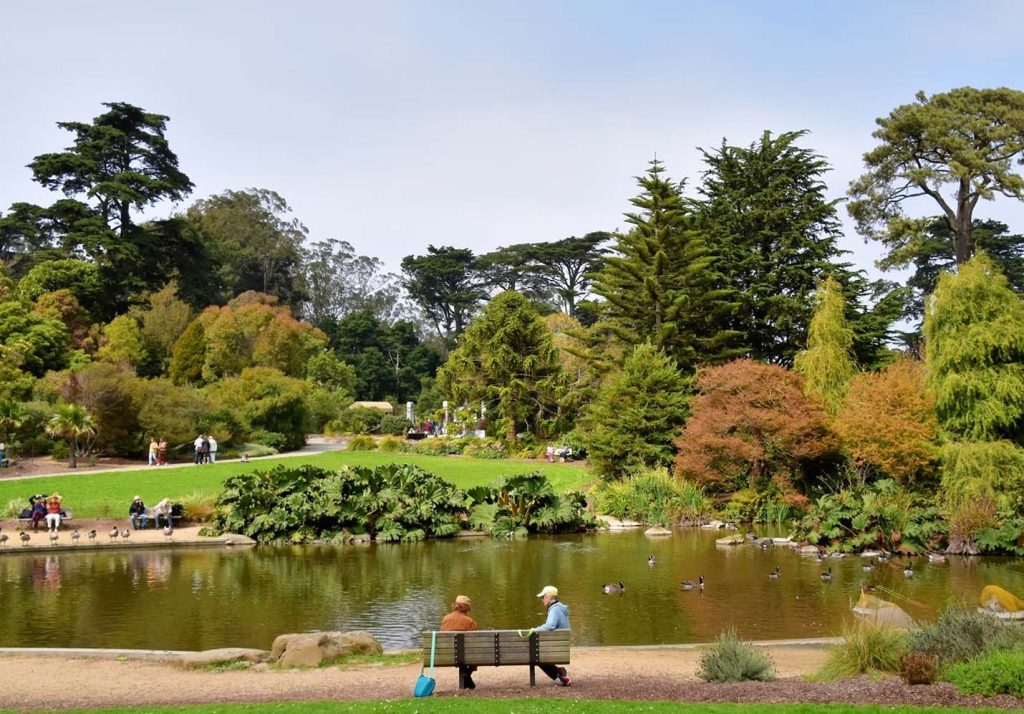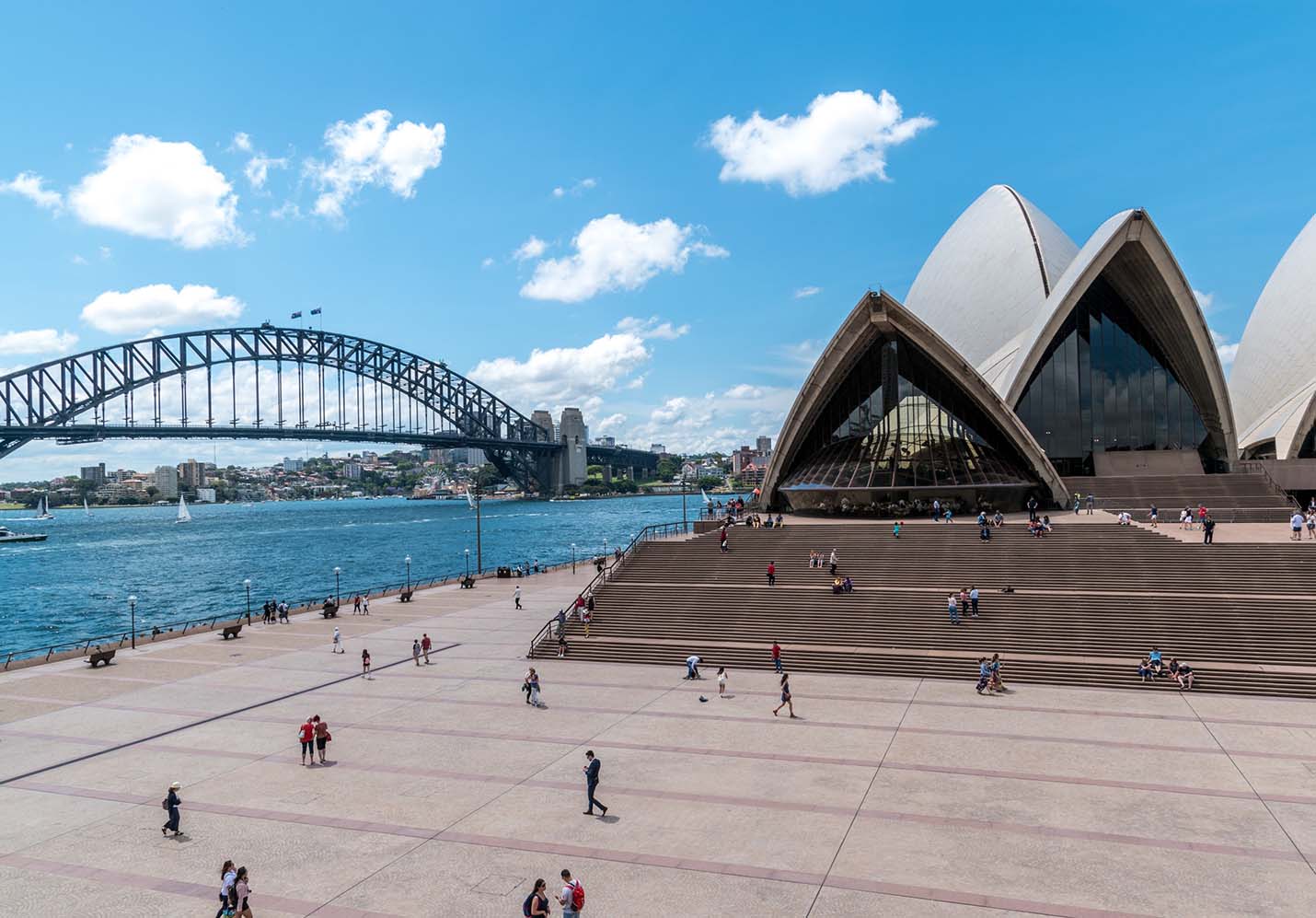San Francisco, a city known for its stunning landscapes and vibrant culture, offers a wealth of experiences that captivate every visitor. From the iconic Golden Gate Bridge to the serene Japanese Tea Garden, there’s something for everyone. We’ll explore 8 must-see destinations that showcase the best of San Francisco, blending famous landmarks with lesser-known treasures. Whether you’re drawn to the city’s historic charm, natural beauty, or artistic flair, these highlights will ensure a memorable exploration of the Bay Area’s most celebrated spots.
Golden Gate Bridge: The Grace of the Red Giant
The Golden Gate Bridge is one of San Francisco’s most iconic landmarks. When it was completed in 1937, it was the longest and highest suspension bridge in the world. Standing on the bridge for the first time, I was struck by its stunning grandeur and magnificence. The red paint of the bridge not only complements the surrounding natural environment but also remains highly visible in varying weather conditions. I especially recommend visiting in the morning or evening, when the light is softer, and the bridge’s silhouette looks particularly enchanting in the glow of the sunrise or sunset.
Starting from the southern end of the bridge is my recommended approach. There is a spacious parking lot where you can leave your car and then walk north along the pedestrian path to take in the full view of the bridge. The path is wide and well-maintained, making it perfect for a leisurely stroll or bike ride. On the bridge, I can feel the sea breeze on my face and hear the sound of waves crashing against the rocks below. This experience, whether in the quiet of the early morning or the hustle and bustle of the evening, allows me to appreciate the unique charm of the Golden Gate Bridge.
For photography enthusiasts, the Golden Gate Bridge is undoubtedly a fantastic location. Whether using a professional camera or a smartphone, you can capture breathtaking views. Especially during sunset, the bridge is illuminated by golden light, and the red structure looks particularly dazzling against the evening sky. If you have time, I suggest taking a walk at Crissy Field nearby. The grass and beach there provide a superb vantage point to view the bridge, making for picturesque scenery.
Getting to the Golden Gate Bridge is very convenient. You can drive, bike, or take public transportation. There is a $6 toll for driving over the bridge, but walking and biking are free. If you drive, it’s best to arrive early as parking spaces are limited. Walking and biking have dedicated paths and parking areas, making them very convenient options.
Fisherman’s Wharf: The Bustling Heart of San Francisco
Fisherman’s Wharf is one of San Francisco’s most lively areas. Once a busy fishing port, it has now evolved into a multi-functional tourist destination. The waterfront area of Fisherman’s Wharf features numerous restaurants, shops, and entertainment venues, making it an ideal place to experience the flavor of San Francisco.
When visiting Fisherman’s Wharf, I highly recommend checking out Pier 39. This vibrant commercial district offers many interesting attractions and activities. The most famous of these is the sea lions. Every time I approach Pier 39, I can see sea lions basking in the sun on the pier, their playful antics and barks always bring a smile to my face. This natural “animal exhibit” attracts many visitors and is a major highlight of Fisherman’s Wharf.
At Pier 39, I can also enjoy various entertainment options, such as the Aquarium of the Bay. This aquarium showcases a range of marine life, including local sea stars, sharks, and various fish species. For family visitors, it’s an educational and entertaining spot. If I’m interested in San Francisco’s history, the San Francisco Maritime National Historical Park is a great place to visit. It displays exhibits and ships related to maritime history, helping me gain a deeper understanding of the city’s maritime culture.
The dining options at Fisherman’s Wharf are also abundant. Here, I can taste the freshest seafood, with clam chowder being a signature dish. Its rich flavor and creamy texture make it a must-try. Additionally, there are many restaurants offering a variety of delicious dishes, such as crab, oysters, and fish sausages. I enjoy savoring a meal while taking in the sea view, immersing myself in the city’s unique maritime atmosphere.
Fisherman’s Wharf is close to downtown San Francisco, making it very accessible. I can take public transportation, a taxi, or bike there. Entry to Pier 39 is free, but some attractions and museums may require separate tickets. For example, tickets to the Aquarium of the Bay are approximately $25, which is suitable for a family visit. If planning to attend special events or visit museums, it’s a good idea to check the relevant information in advance and plan accordingly.
Palace of Fine Arts: A Reflection of Classical Aesthetics
The Palace of Fine Arts, located in San Francisco’s Bay Area, was built for the 1915 Panama-Pacific International Exposition. This building is renowned for its classical Roman and Greek architectural styles and is one of San Francisco’s most charming historical sites. Every time I visit the Palace of Fine Arts, I’m captivated by its domed structure and elegant arches.
Spring and autumn are the best times to visit the Palace of Fine Arts. During these seasons, the gardens are in full bloom, and the reflections on the lake create beautiful scenes, making me feel like I’ve stepped into a classical painting. If you’re interested in architectural design, every detail of the Palace of Fine Arts is worth examining. Walking under the arches, I can appreciate the grandeur and solemnity of classical architecture. It’s an ideal place for photography, whether capturing the building’s exterior or the reflections in the lake. I suggest bringing some lightweight photography equipment to capture these beautiful moments.
In addition, there are many trails around the Palace of Fine Arts, perfect for a leisurely stroll. I can enjoy a relaxed walk here and experience the harmonious blend of nature and human-made beauty. If I have time, I can also enjoy a cup of coffee at a nearby café, savoring a peaceful moment.
The Palace of Fine Arts is located north of downtown San Francisco, and transportation is very convenient. I can choose to walk, bike, or take public transportation. Admission is free, but special events or exhibitions may require tickets. Typically, information about exhibitions and activities is available on the official website, allowing me to plan my visit in advance.
San Francisco Botanical Garden: A Natural Wonder

The San Francisco Botanical Garden, located within Golden Gate Park, is a showcase of global plant species. Covering over 55 acres, the garden features more than 8,000 plant varieties from around the world. Every time I visit, I’m drawn to the rich plant landscapes.
The garden’s winding trails meander through lush vegetation. Spring and summer are the most enchanting seasons, with various flowers in full bloom, transforming the entire garden into a picturesque scene. Walking among the flower beds, I can see rare plants, especially tropical and subtropical varieties, whose unique blooms and shapes are truly impressive.
The garden also includes several themed areas, such as the Japanese Garden, South African Garden, and Australian Garden, each with its distinct style and plant combinations. The Japanese Garden, known for its tranquil pond, exquisite rock formations, and elegant pavilions, is an ideal place to experience Eastern horticulture. The South African Garden features a vibrant array of native plants, showcasing vivid colors and vitality.
If I’m interested in botany, the garden provides detailed plant labels and information boards to help me understand the characteristics and growth habits of each plant. Additionally, the garden offers regular lectures and guided tours, allowing me to learn more about plant knowledge and gardening techniques. Whether for walking, photography, or learning, the garden caters to all my needs.
The San Francisco Botanical Garden is located within Golden Gate Park and is easily accessible. Admission is $10, though San Francisco residents and certain times may offer discounts or free entry. I can walk, bike, or take public transportation to the garden. Given the garden’s large size, it’s advisable to wear comfortable shoes to fully enjoy the beautiful scenery.
Japanese Tea Garden: A Tranquil Escape with Eastern Charm
The Japanese Tea Garden, also located within Golden Gate Park, is one of the oldest Japanese gardens in the United States. Every time I enter this garden, I’m captivated by its traditional Japanese garden design, including ponds, bridges, bamboo groves, and tea houses. The garden’s design is inspired by traditional Japanese horticulture, exuding a sense of Eastern tranquility and elegance.
In spring, the cherry blossoms bloom, and pink petals gently fall on the pond, creating a dreamy scene. Visiting at this time, the garden feels as though it is adorned with petals and spring breezes, like a poetic painting. The winding paths, koi swimming in the pond, and the gentle rustle of bamboo in the breeze create a serene, Zen-like atmosphere.
The garden also features a traditional tea house where I can enjoy authentic Japanese green tea and delicate Japanese sweets. The tea house’s design also reflects traditional Japanese style, with wooden decor and elegant arrangements, enhancing the cultural experience. Sitting in the tea house, savoring the tea ceremony, and enjoying the garden’s beauty allows me to completely relax and enjoy a moment of peace.
The entrance fee for the Japanese Tea Garden is $10. Since it is located within Golden Gate Park, transportation is very convenient. I can choose to walk, bike, or take public transportation to the garden. For frequent visitors to Golden Gate Park, considering an annual pass may be a good idea, as it provides additional benefits and allows visits throughout the year to experience the garden’s seasonal changes.
San Francisco Chinatown: A Cultural Treasure
San Francisco Chinatown is one of the largest Chinese communities in the United States and one of the oldest Chinatowns in the world. Every time I stroll through the streets of Chinatown, I’m immersed in its rich Chinese ambiance. Traditional Chinese architecture, red lanterns, and bustling markets make me feel as though I’ve stepped back into an old Chinese district.
In Chinatown, I can find various Chinese goods and souvenirs, such as silk fabric, traditional handicrafts, and various snacks. The shops are filled with Chinese decorations and festival items, creating a strong cultural atmosphere. Dim sum is a specialty here, and I can taste a variety of dim sum dishes, such as siu mai, shrimp dumplings, and chicken feet. If I enjoy Chinese flavors,Chinatown will definitely satisfy my taste buds.
Additionally, Chinatown has many interesting cultural sights and activities, such as the Chinese Culture Center. This center regularly hosts exhibitions and events related to Chinese culture, showcasing the history and art of the Chinese community. If I’m interested in Chinese culture, visiting here is a great way to learn more about the cultural background and historical stories.
Chinatown is located in downtown San Francisco, making it very accessible. I can take public transportation, a taxi, or walk there. Exploring Chinatown itself is free, but special cultural events or museums may require tickets. Overall, the cost of visiting Chinatown mainly depends on my shopping and dining expenses.
Twin Peaks: A Premier Viewing Point of the City
Twin Peaks is a pair of small hills located centrally in San Francisco. Every time I visit here, I’m amazed by the panoramic views offered from the observation point. At an elevation of about 277 meters, it is one of San Francisco’s main viewing spots and provides an excellent opportunity to overlook the entire San Francisco Bay Area.
From the Twin Peaks observation point, I can see a sweeping view of San Francisco, including the Golden Gate Bridge, Bay Bridge, and the city skyline. Especially during the early morning or evening, the scenery is particularly enchanting. In the early morning, as the city wakes up, the sunlight on the buildings offers a clear view; in the evening, the city lights gradually illuminate, transforming the city into a dreamlike landscape.
If I enjoy hiking, I can take one of the trails up the mountain. Although the climb can be steep, reaching the top provides a unique sense of achievement and visual enjoyment. Especially at night, the observation point offers a panoramic view of the city lights, which is incredibly refreshing. On clear days, I can also see the distant ocean and surrounding mountains, making the view exceptionally spectacular.
The observation point at Twin Peaks is free, but parking at the top is limited, so it’s advisable to use public transportation. The L-line bus can take me directly to the top, making it a convenient option. If driving, be aware that parking is limited, so planning ahead or visiting during non-peak hours on weekdays is recommended.
San Francisco Museum of Modern Art: A Perfect Blend of Art and Architecture

The San Francisco Museum of Modern Art (SFMOMA) is one of the largest modern art museums in the United States. Every time I visit, I’m impressed by its extensive modern art collection and cutting-edge architectural design. The museum’s exhibits cover various modern art styles, from classic paintings to innovative installations.
The museum’s architecture is also noteworthy, designed by renowned architect Norman Foster. The museum’s façade is distinguished by its unique geometric shapes and glass curtain walls, showcasing the aesthetics of modern architecture. Inside the museum, the exhibition spaces are spacious and well-lit, providing a comfortable viewing experience.
Inside the museum, I can see a vast array of modern art pieces, including paintings, sculptures, and photographs. The museum regularly hosts special exhibitions showcasing new works by contemporary artists, allowing me to experience the latest trends in the art world. If I have a deep interest in art, I can also participate in guided tours and lectures at the museum, interacting with artists and curators to gain deeper insights into the exhibits’ backgrounds and creative concepts.
The San Francisco Museum of Modern Art is located downtown, making it very accessible. I can walk, bike, or take public transportation to get there. Admission is approximately $25, though San Francisco residents and certain times may offer discounts or free entry. To ensure I can see the latest exhibitions and events, it’s a good idea to check the museum’s official website in advance and purchase tickets.


